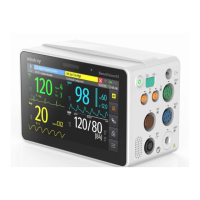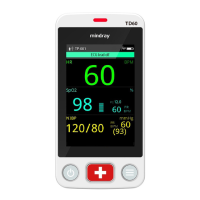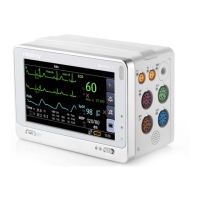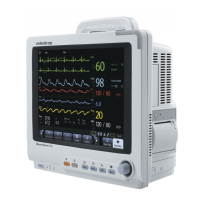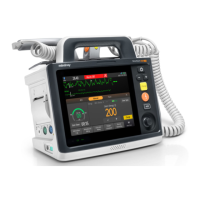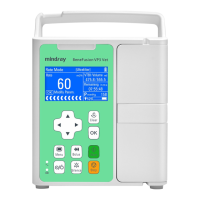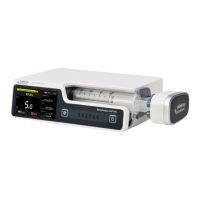BeneVision N Series Patient Monitor Operator’s Manual 29 - 5
29.7.2 Preparing the Skin
Good electrode-to-skin contact is important for good signal quality. Before applying the electrodes, clean the
application site of oil and dirt and avoid placing the electrodes over excessive body hair or lesions. Insufficient
cleaning of the skin can cause high skin impedance which could cause the stimulation to stop.
To properly prepare the skin, follow this procedure:
1. Select sites with intact skin, without lesion of any kind.
2. Shave hair from skin at chosen sites.
3. Gently rub skin surface at sites to remove dead skin cells.
4. Thoroughly cleanse the site with a mild soap and water solution.
5. Dry the skin completely before applying the electrodes.
29.7.3 Placing the Electrodes and Sensor
Stimulation of the ulnar nerve in the wrist and acceleration measurements at the adductor pollicis are preferred
for routine monitoring. When monitoring neuromuscular transmission, round surface electrodes with snap
connection are a must. Small (pediatric or neonatal) electrodes are advisable to obtain a sufficient current
density. In order to ensure a steady signal quality, be sure only to use CE marked electrodes.
Ensure that the thumb can move freely before applying NMT electrodes and sensor. Follow this procedure to
place the electrodes and sensor:
1. Place the distal electrode near the wrist.
2. Place the proximal electrode 2 to 3 cm proximal of the distal electrode.
3. Attach the red clamp to the proximal electrode.
4. Attach the black clamp to the distal electrode.
5. Affix the sensor with its large flat side against the palmar side of the thumb with a piece of tape. The cable
should be attached in such a way that it does not 'pull' at the sensor and that movement of the thumb is
not obstructed.
• When placing the electrodes, make sure that they do not touch each other.
• If the electrodes are placed incorrectly, wrong nerves are stimulated and this causes wrong muscle
response.
• When multiple nerves are stimulated, the measured response may be affected by activity of other
muscles.
• If the stimulation electrodes are placed very close to the palm of the hand, the muscles are
stimulated directly by the stimulation pulses.
• If the current is too strong, it may stimulate the muscles too much.
• Moving or touching the patient during measurement may cause incorrect results.
• Make sure that the NMT cables does not contact external pacemaker or catheter wires.
• To avoid unintentional electrical shocks always make sure that the NMT stimulation has been
stopped before touching the electrodes.
• Take care to handle the NMT sensor, avoiding forcefully striking the sensor.
• After repositioning the patient, check the NMT sensor application site and ensure that the sensor is
still properly applied and the thumb can move freely.
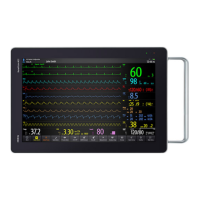
